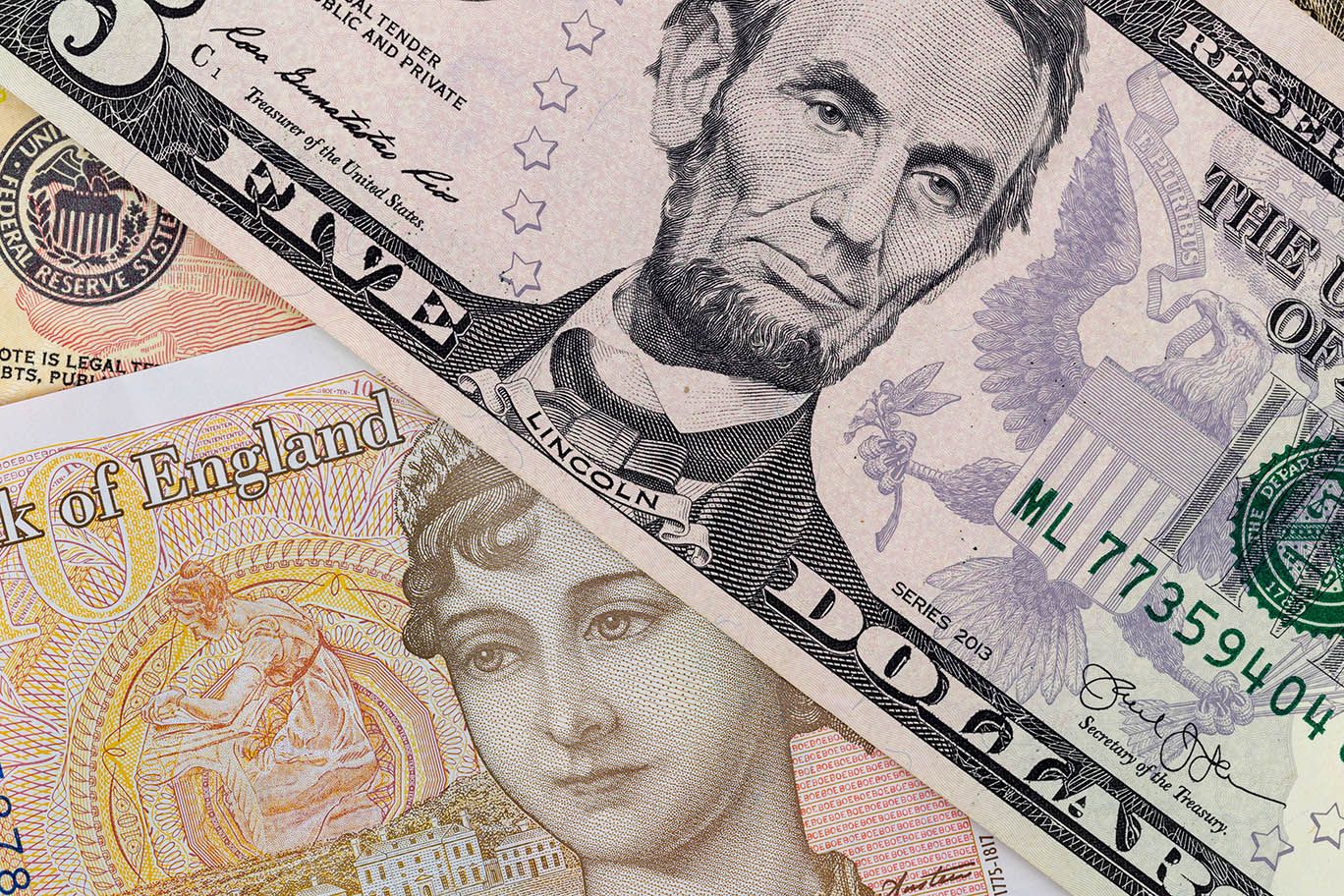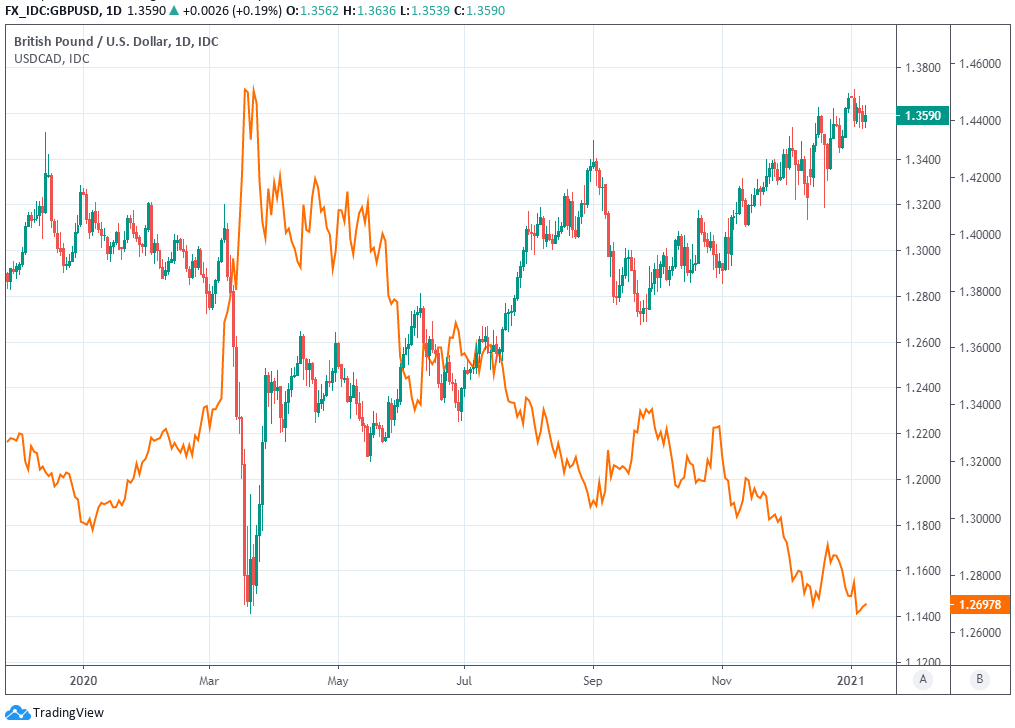Dollar Reverses Lower after Coronavirus Scuttles Job Market at Year-end
- Written by: James Skinner
-

Image © Adobe Images
- GBP/CAD spot rate at time of writing: 1.3580
- Bank transfer rate (indicative guide): 1.3255-1.3346
- FX specialist providers (indicative guide): 1.3424-1.3533
- More information on FX specialist rates here
The Dollar Index reversed lower Friday while other currencies were lifted by default when non-farm payrolls figures showed the U.S. job market cracking around year-end and after a period when coronavirus containment efforts were again closing down parts of the world's largest economy.
Non-farm payrolls fell by a -140k last month, the Bureau of Labor Statistics said, surprising on the downside of consensus estimates that pointed toward a 60k increase.
December's net-loss was the first since April last year and the initial full month of 'lockdown' for those parts of the country and economy where legislators chose to impose stay-at-home orders, which shuttered allegedly non-essential businesses and kept households isolated indoors for much of the time.
"The hardest hit sector in December was leisure and hospitality, that lost just short of 500K jobs, while government payrolls fell by 45K. Employment in retail trade surprisingly expanded by 121K, and there were gains in goods-producing sectors including construction and manufacturing," says Katherine Judge, an economist at CIBC Capital Markets. "Given the continuing rapid spread in virus cases, there isn't likely to be much improvement in labor market conditions over first couple months of 2021."
Above: Dollar Index shown at 15-minute intervals alongside S&P 500 futures (blue).
December's unemployment rate was 6.7%, the lowest since the coronavirus came along and also unchanged from the prior month. The estimated U.S. pay packet was 0.8% higher and misleadingly so, according to CIBC's Judge, given that many of the lost jobs were in low-paying parts of the market. However, and despite the obvious disappointment, revisions to November's data mean Friday's number appears at first glance to have left the labour force in a worse position than it actually was at year-end.
November's job gain was revised to 336k on Friday when it had been reported as 245k, which means that the cumulative miss against market expectations for November and December was barely more than 40k. November's 336k gain followed and even larger 610k increase in October.
"The leisure sector can’t begin to recover until Covid restrictions can be lifted, and that seems unlikely to start before late February at the earliest, assuming we’re right in our view that cases will start to fall later this month, reducing the pressure on hospitals next month. A full recovery will probably have to wait until the second half, when we expect a massive wave of post-Covid demand," says Ian Shepherdson, chief economist at Pantheon Macroeconomics.
The American job market was quick to shed jobs last year and almost as quick in either clawing them back from the coronavirus or otherwise creating new jobs. However, there's uncertainty about what the future holds because economic disruption could then become more widespread and prolonged if a third coronavirus wave grows further.
Above: Dollar Index shown at daily intervals alongside Euro-to-Dollar rate (orange).
The Dollar Index reversed course and fell in the wake of the announcement, enabling other currencies like the Euro, Yen and Pound to prosper by default. Previously the greenback had been carrying an intraday gain over many other major currencies including the Euro and Yen, though not Sterling.
Dollar were sold against all major currencies a short time after the release, leaving all major U.S. exchange rates carrying intraday losses. For the week the greenback was on course to post a modest 0.79% increase against Japan's faltering Yen and a paling Pound Sterling while also having knocked the Euro back from earlier peaks around 1.2350, which were also the single currency's highest levels since the first quarter of 2018.
"It's not truly shocking considering the unexpected miss/job loss recorded by the NFPs on Wednesday…hence the very tepid knee jerk bid for the broader USD, then sell-off," says Eric Bregar, head of FX strategy at Exchange Bank of Canada. "Traders gave higher US yields the benefit of the doubt yesterday when bidding up the dollar in NY trade, but the tentative idea that the US yield spread driver may be back as a driver for the USD waned considerably by the end of the day. Dollar/CAD re-focused on Feb WTI’s decent rebound off session low chart support in the 50.40s, and this forced the market to give up it’s 1.2710-30s regain attempt by the NY close. Some broad USD sales helped as well when AUDUSD managed to defend chart support in the 0.7730s and when GBPUSD regained the bottom end of its new 1.3550-1.3610s price range."

